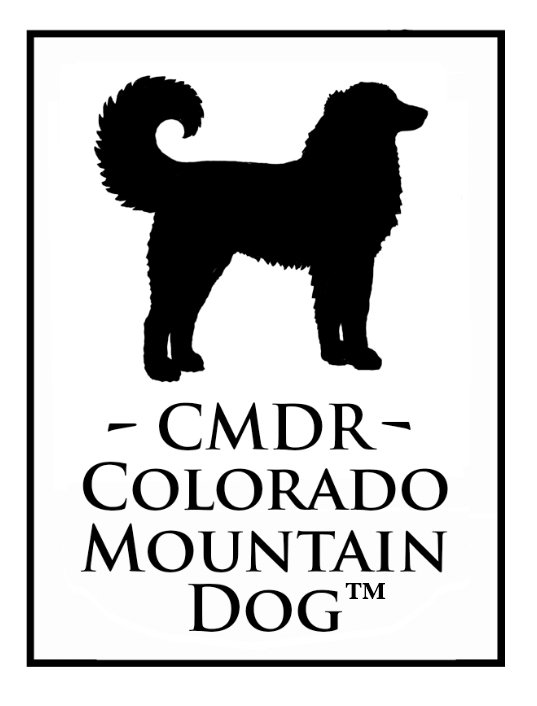~ Articles ~
Do CMDs contain Non-LGD Genetics?
The answer is yes and no. Reality has shattered myth in how we are building our breed. We are basing our selection on function, and on likeness to the CMDR standard. What is an LGD? It is a dog who guards livestock.
The question of non-LGD genetics presents itself in two ways. First, often somebody breeds an LGD with a herding dogs, sometimes as an oops litter, or sometimes just to make cute pups and sell them. We do not register such dogs.
If a breeder wants to do an intentional LGD to non-LGD cross, then the registry responds by asking why, and what it the intended trait capture. We will still not register such dogs but if the genetic idea is a good one, the breeder can keep track of all crosses, crossing back into LGD genetics for four generations and allowing the final generation to grow out and display the CMDR standard we will consider and wait for the whole project to complete. If the genetic experiment was successful, we will back-register the generations so that the breeders may retain their G standings. This protocol is profoundly expensive and risky. A breeder needs to be very experienced because unwanted puppy production is already high in our country, and informal breeding is irresponsible.
This protocol is similar to other breed groups and organizations which allow a 4 to 8 generation period of outcross development before registering an animal as a purebred. Breeders do this to improve traits and to broaden genetic diversity. Examples of breed organization who do this are TICA, The International Cat Association, and NKR, the National Kiko Registry.
The second scenario is far more common: someone has a perfect working LGD, brings it into a CMDR and the does a DNA test and is shocked to find non-LGD genetics. In these cases, if the dog already reflects the standard in function and type, we do not reject it. But we advise and assume that the dogs will be crossed within LGD breed working group genetics, so that the outcross genetics are eventually cut to a small percentage, while trait selection is going on.
This second situation reflects most LGD crosses in this country. Such crosses often outwork their purebred counterparts and do so with fewer genetics flaws. Many people scream about breed group purism, then do DNA and say oops. The point is a healthy functioning dog which reflects the standard.
Here is a great case in point: An owner had a purebred Anatolian Shepherd who killed livestock. The owner kept the dog for years and invested in trainers, but never did break the dog of killing, and of failing to guard from outside predators. She sold the dog and purchased a GP/Anatolian cross. The arrival of the dog was like the arrival of an angel. Suddenly her animals were safe, outside predation stopped, the dog was friendly to all guests and watched the children. On hearing about the CMD program, the owner knew her dog was a fit! She contacted us, and after hip tests we entered her dog as a G1. Soon after that, the owner did a DNA test and called us stricken. The dog had tested 25% hunting hound.
We did not put this dog off of the database! If we had included the purebred Anatolian and excluded this highly functional LGD cross, we would have been blind purists. The problems in the breeding of the aggressive AS were caused by purism and poor selection. Selection of traits for function is everything, not breed name tags. Plus, as every authentic breeder knows, the pups, when crossed back into LGD lines, will be only 12 percent…the next generation 6 percent, and by the time we are at the sixth generation G5, the outside percentage is vanishingly small. Yet with selection, everything that made this dog a highly useful guardian for small acreage will have been preserved.
Many people who propagate dogs function on shallow narratives until experience with genetics causes the fads to break down. Our protocols facilitate genetic nerds. We even have a CMDR genetic Nerd Award. We DO have a standard and we expect that by the time a dog reaches the G5, 6th generation (FD through G1 to G5), it will be high percentage LGD breed make-up. But the decision to allow the random genetics that can be added in the loose fields of the American LGD also contributes to health and genetic diversity. Purism is an aggressive form of non-creative ignorance. The way we are building our breed IS domestic breeding, and it has always been that way, until recent purism began its destructive work.
Genetics is a pyramid. While most breed organizations focus on breed names and the perfection of traits, they forget genetic diversity, arrive at the peak of perfection at the tip of the pyramid, have nowhere to go genetically, and collapse into a coefficient black hole.
The CMDR focuses as much on diversity as it does the honing of traits. We have a long long road ahead. We are not headed towards a genetic cliff. Each newly entering dog is selected by function, temperament, intelligence, healthy hips, and by resemblance to the physical standard. We will only add dogs who are actively working with livestock on farms, and who display the traits we are seeking.
(Pictured, “DSK Bandersnatch, a fabulous and beautiful guardian developed by a professional AKC breeder who included traces of Saint Bernard and Lab in her multi-generational breeding to get the behaviors she wanted for her ranch in a guardian dog.)
If you have a working LGD that you think fits, we’d love to hear about it! Email wendyjfrancisco@gmail.com .

